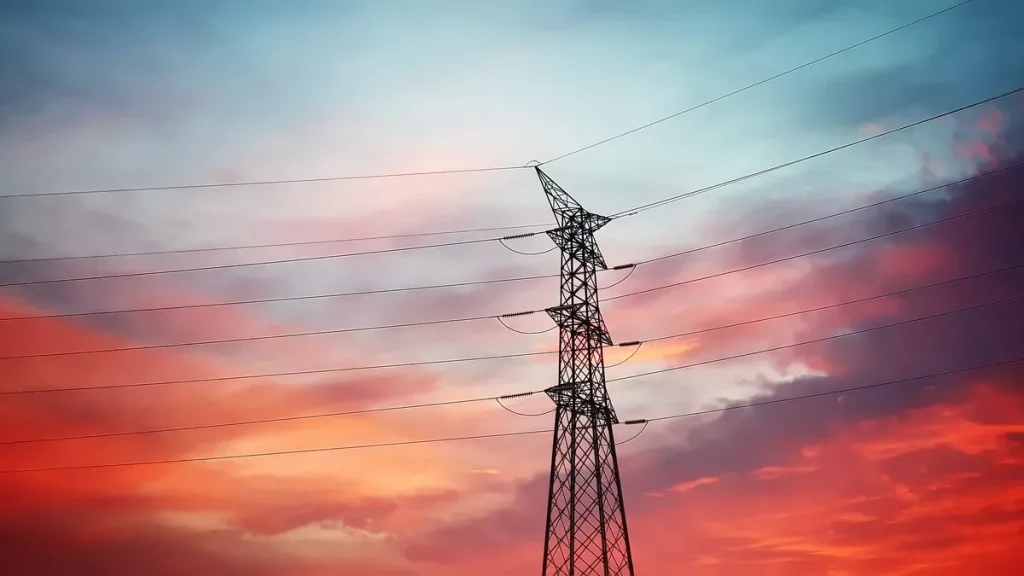The first mention of it as a phenomenon dates back more than 4,000 years. It was described in some ancient Egyptian chronicles.
The first researcher who tried to obtain electricity experimentally was the ancient Greek philosopher and scientist Thales. He conducted his experiments about 2600 years ago. He did not succeed, but he guessed the existence of static electricity.
Near Baghdad in the 30s of the last century, a strange artifact was found, which was called the “Baghdad battery”. Apparently, this vessel with a metal rod and alkali produced a voltage of about 1 volt. It was made, according to scientists, about 2200 years ago.
Once upon a time, there was a belief in Kyivan Rus that lightning strikes in those places on the earth where you can reach underground water, and therefore wells were dug in the places where lightning strikes.
In the mythology of almost all nations, there are deities capable of controlling electricity and throwing lightning.
Material current carriers are electrons. They were discovered in 1897 by Joseph Thomson.
The electrical nature of lightning was reliably established only in the 18th century.
Even today, about 1 billion people on Earth do not have access to electricity.
The lightning rod was invented by Benjamin Franklin, the same person whose portrait is depicted on the US $100 bill.
Fireflies are amazing insects that generate real electricity.
It is with the help of electricity that impulses are transmitted in the nervous system.
Platypus animals feel the weakest electric discharges that occur when muscles are tense. They focus on them when they hunt for fish in dark water bodies at night.
The very term “electricity” was introduced by the scientist William Gilbert in 1600.
The occurrence of electrical tension in the muscles of living beings was proved in 1791 by the Italian scientist Luigi Galvani.
The most ecologically clean electricity is produced at hydroelectric power plants and, surprisingly, nuclear power plants. But even solar and wind power plants are less ecological, since their production and work require the use of materials that pollute the environment.

The Russian engineer Lodygin invented the incandescent lamp in parallel with Edison, but independently of him.
The world’s first electricity generator was created by Michael Faraday in 1831.
There are powerful natural sources of electricity in nature. For example, electric eels and stingrays can easily kill even a person with a current discharge.
Water is an excellent conductor of electricity, but not the H2O molecules themselves, but the impurities contained in the water medium, mainly mineral salts.
The famous scientist Lomonosov led the wires from the lightning rod to his laboratory, and during thunderstorms he was engaged in electrical research.
The world’s first commercial power plant started operating in 1882 in New York, providing energy for several neighborhoods.
And in Russia, the first power plant started working 4 years later, in 1886, and it was located right in the imperial residence, in the Winter Palace of St. Petersburg.
Before the Second World War, the voltage in urban networks in the USSR was 127 volts. In Japan, it is still 100 volts, and in some other countries – 120.
Of all widely available materials, silver conducts electricity best.
Electric voltage in lightning can reach 1 billion volts.
The German scientist von Kleist, who experimented with electricity, is considered the first person who suffered from it. He built a battery, and it electrocuted him, so that von Kleist lost consciousness.
The most famous scientist who ever studied electricity is Nikola Tesla, who devoted his entire life to his work.
Who invented electricity and what is the principle of its action
Modern life is simply impossible to imagine without light and electrical appliances. Therefore, the discovery of electricity is the most important event in the history of mankind. This is a revolutionary breakthrough that has given people enormous opportunities, making life comfortable. Electricity is the movement of charged particles under the influence of an electromagnetic field either in one direction (direct current) or with a periodic change of direction (alternating current).
The term itself originated from the Greek word “electron”, which means “amber”. Its founder was the ancient Greek philosopher Thales, who in the 7th century B.C. discovered the wonderful property of amber to attract light materials (for example, cork shavings) and hair, if rubbed with a piece of wool. However, it was only in the middle of the 17th century AD that Thales’s observations were thoroughly studied. This was done by the German physicist Otto von Gerike, who created the first electrical device. It was a ball of sulfur that rotated and was fixed on a metal pin. She, as well as amber, had the power of attraction and repulsion.
In 1729, the scientist Stephen Gray, who studied the properties of the movement of electricity, discovered that not all materials can conduct electricity. Substances that conduct current are called “electrics” (conductors), and those that do not conduct current – “dielectrics” (insulators). Equally important was the discovery of the French scientist Charles Dufay, who in 1733, as a result of numerous experiments with sulfur and resin, discovered positive and negative electric charge. Although he initially believed that these were two different types of electric current.

The first capacitor, which was called the Leyden jar, was created by the Dutch physicist Pieter van Muschenbroek. This device consisted of a glass bulb that was sheathed with a layer of tin on the outside and inside. The jar was closed with a wooden lid, and a metal pin was inserted into it. When supplying electricity, the Leyden bank could accumulate quite powerful charges. Also, with her help, the first electric spark was obtained.
In 1747, the American politician and scientist Benjamin Franklin published his scientific treatise, in which the concept of “electricity” was given. It was written there that all materials contain “liquid electricity”, which under the action of friction can flow from one material to another and accumulate in them. Benjamin Franklin is also the inventor of the lightning rod, with which he proved that lightning has an electrical origin.
In 1785, the French scientist Charles Coulomb, on the basis of numerous experiments with metal balls, derived a law describing the electrical interaction between point charges (Coulomb’s law). Its content is the discovery that charged particles of the same name (“-” and “-” or “+” and “+”) are repelled, and charged particles of the same name (“-” and “+”) are attracted.
In 1800, the main discovery in the study of electricity was made. Italian physicist Alessandro Volta invented the first galvanic element – a chemical battery. It consisted of round silver plates, between which there were pieces of paper soaked in salt water. A chemical battery made it possible to obtain a constant electric current thanks to chemical reactions.
In 1820, the Danish scientist Hans-Christian Oersted discovered the interaction of an electric current with a magnet. He noticed that when an electric current is applied to the conductor, the compass needle lying parallel turns in a perpendicular direction. Oersted’s developments were continued by the scientist Andre-Marie Ampere, who undertook the study of electric magnetism, giving rise to a new science – electrodynamics. Many such talented scientists, such as Ohm, Lenz, Gauss, Joule, were engaged in research on electric current. In 1830, the electrostatic field was discovered.
In 1831, the English scientist Michael Faraday discovered electromagnetic induction and invented the first electric generator based on it. He also introduced the concepts of magnetic and electric fields and created an elementary electric motor. It was an electrical conductor revolving around a magnet.
